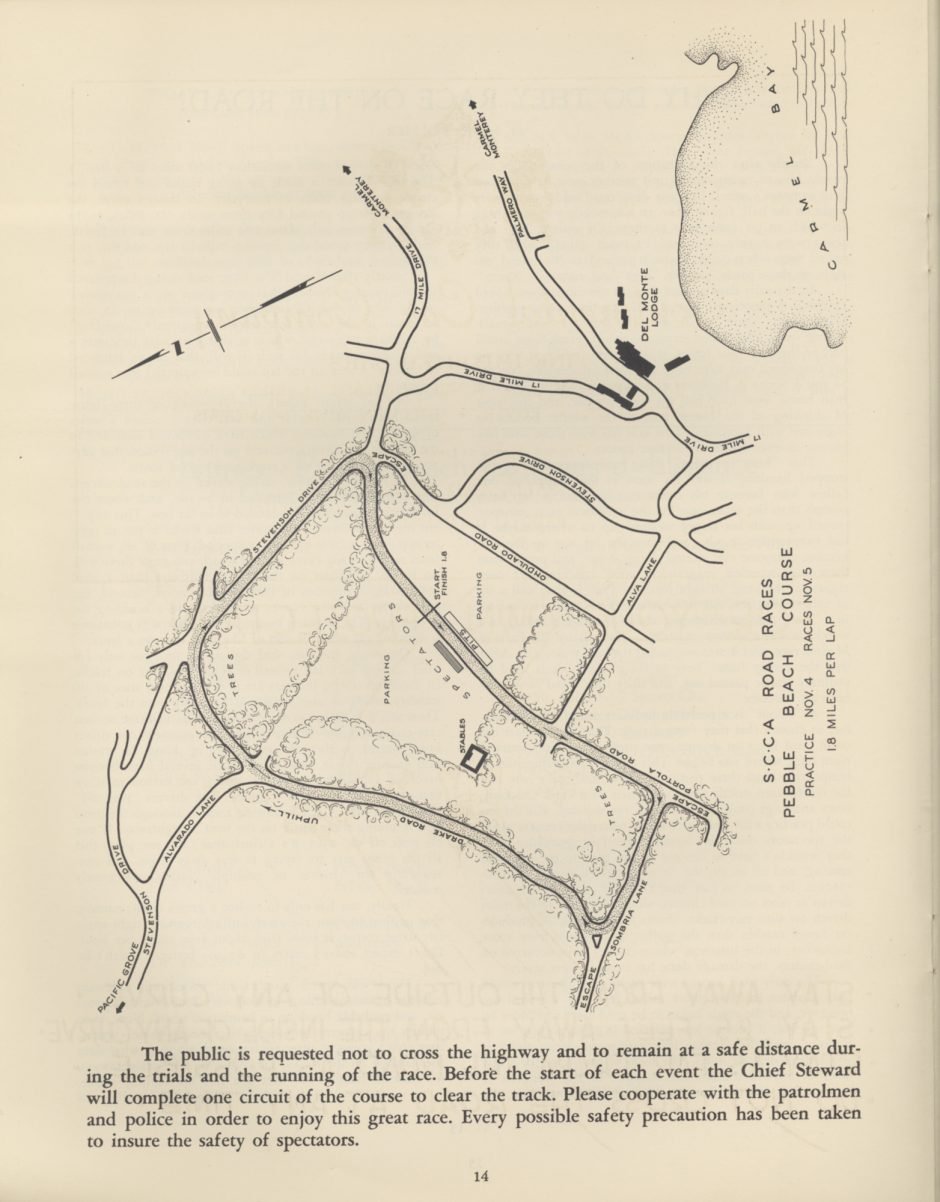A Wild Ride: the 7-Year History of the Pebble Beach Road Races
The Pebble Beach Road Races were as absurd as you would imagine.
From 1950 to 1956, the world’s fastest sports cars careened and swerved and skidded around the streets intersecting 17-Mile Drive. They would swirl around unpaved hairpin turns, dodging Monterey Pines between Cypress Point Club and the Equestrian Center, screaming up the likes of Portola Road, Sombria Lane, Drake Road, Stevenson Drive, Bristol Curve, Forest Lake Road and all those roads you get lost on driving 25 mph.
Photography by Julian P. Graham
Modest stacks of hay bales buffeted the course, serving as a last line of defense – both for the fans packed 10 rows deep sometimes just 10 yards off the course, and for the daring (some may say deranged) drivers spinning out of control toward a forest of tree trunks.
For seven surreal years (1950-1956), race car drivers flocked to Pebble Beach to compete for the Del Monte Trophy, traversing the tight course and battling brutal visibility – the rows of towering pines sent slivers of sunlight shooting through them, casting shaky shadows and creating a strobe light effect. Other years, the course was merely shrouded in fog or slicked by rains.
Photography by Julian P. Graham
The inaugural Pebble Beach Road Races in 1950 were the main attraction of what has become the internationally celebrated Car Week, with 10,000 fans lining the 1.8-mile track – it eventually grew to a twisting 2.1 miles – in the Del Monte Forest.
The first Pebble Beach Concours d’Elegance was also staged simultaneously, but today’s marquee draw was initially created as an opportunity to showcase new sports cars during the road races.
For just $15, you too could compete in the Pebble Beach Road Races. The infancy of American road racing in the years following World War II was often a semi-pro or amateur affair, but the 1950 event gained credibility when 23-year-old Phil Hill won the first running.
Hill’s battering-ram style plowed through the Pebble Beach course like Marshawn Lynch burrowing for the end zone on fourth-and-goal. Or like a third-grader playing Cruis’n USA at an arcade, as Sports Illustrated observed:
He drove a new XK-120 Jaguar. It was long, low and hump-fendered, and as sleek as its namesake, but by the time Hill finished punishing it at Pebble Beach it was merely another muddy, dented, brakeless and clutchless racing hulk. Hill’s driving technique at the time consisted of plowing his car into each turn too fast, bracing himself as the car bounced off the track’s protective bales of hay and then jerking the steering wheel until the car straightened out and proceeded to the next turn—with his foot nailed to the gas pedal. It was a technique that showed neither style nor fear, and one that would change.

Hill's driving technique at the time consisted of plowing his car into each turn too fast, bracing himself as the car bounced off the track's protective bales of hay and then jerking the steering wheel until the car straightened out and proceeded to the next turn—with his foot nailed to the gas pedal.
Hill would win the Pebble Beach Road Races twice – in 1950 and 1953 – before becoming the first American to claim the Formula One World Drivers’ Championship in 1961.
Carroll Shelby added cache to the legacy of the Pebble Beach Road Races by winning the final edition in 1956. Shelby would eventually capture the 24 Hours of Le Mans in 1959, and ultimately designed Shelby mustangs.
But the 1956 Pebble Beach Road Races were marred by the death of Ernie McAfee, who fatally smashed his Ferrari into a tree. Race organizers were motivated to build a safer track, and opened Laguna Seca Raceway in the hills above Monterey by 1957.
Like the circuit that snaked through the Del Monte Forest, Laguna Seca features a maze of sharp turns. It does not, however, feature trees flanking both sides of the track. Laguna Seca’s defining feature has become its corkscrew that plummets some six stories, just moments after you crest the top of the course.
An event called the Pebble Beach Road Races was still held at Laguna Seca in 1957, but today the 2.2-mile track is known as the host of major events such as MotoGP and IndyCar racing.
For a glimpse at some rare footage of the Pebble Beach Road Races, check out this trailer for the 2015 documentary Racing Through the Forest:
Join us during our Centennial Year for the 2019 Pebble Beach Concours d’Elegance on Aug. 18!